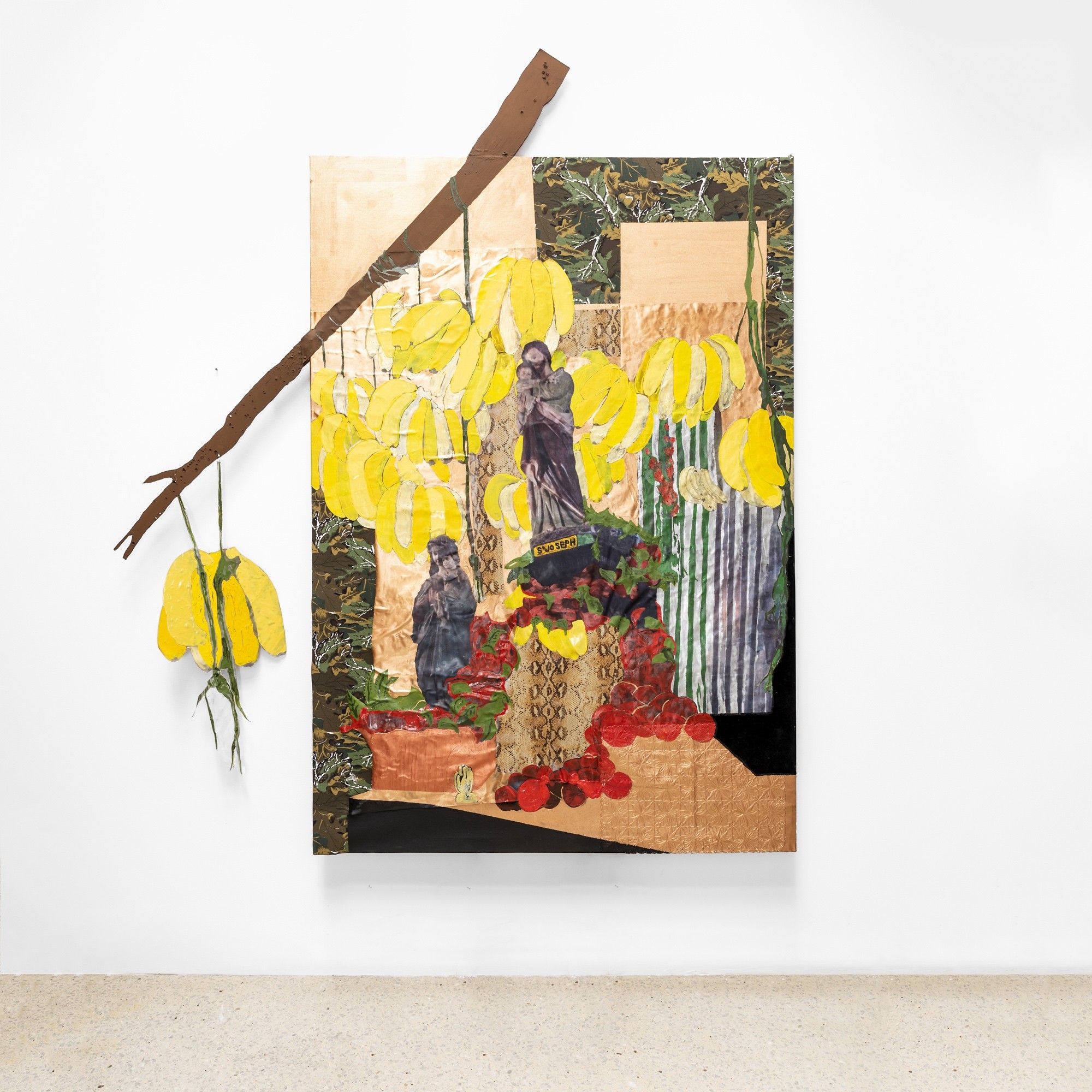Meaning mutates with Bananas and Saints Alike
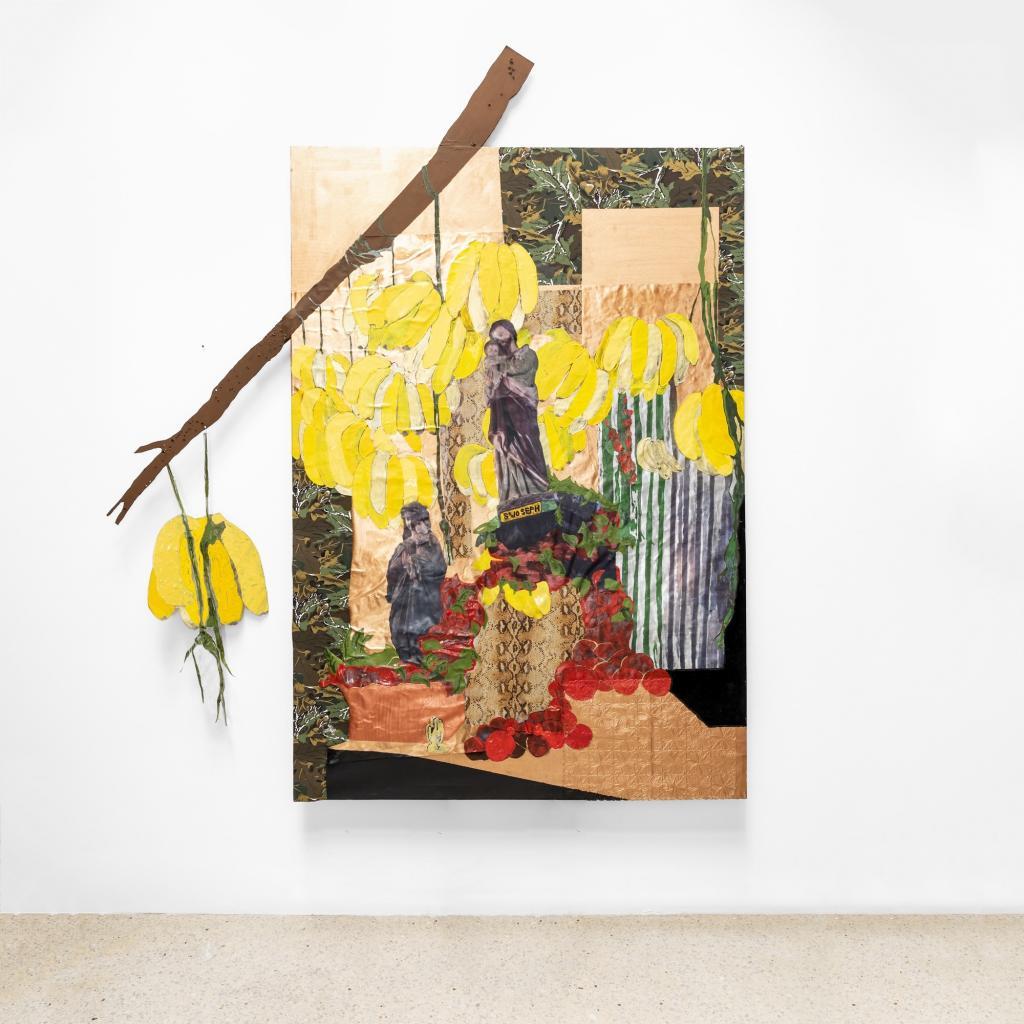
Katharien de Villiers’ Bananas and Saints Alike is a seedbed for humour, exploration, fantasy and joyful emergence. In this exhibition, showing at SMITH in Cape Town (till 30th Nov), de Villiers presents a collection of paintings in mixed media—fabric, wood, oil pastels, acrylic, car paint and found objects—these components that do not always exist together in a gallery setting create a complicated and irregular network of paths, inviting the viewer to join in on the journey of meaning-making through spontaneous and undirected playfulness. The starting point is a question (or perhaps questions), followed by states of confusion. However, de Villiers doesn’t run away from this confusion, she welcomes these tattered shards of incertitude and embraces them as potentially generative.
From the title, all the way to the imagery, Bananas and Saints Alike accepts the fundamental notion that life is often incongruous, illogical, perplexing and un-encompassable. There is no illusion of order, no imposition of narrative, no metaphors, no ideology, no historical analysis or even politics. Meaning is created through engagement, but it also reconstructs and mutates through multiple re-engagements.
Below is a short but very insightful conversation I had with the artist about the exhibition.
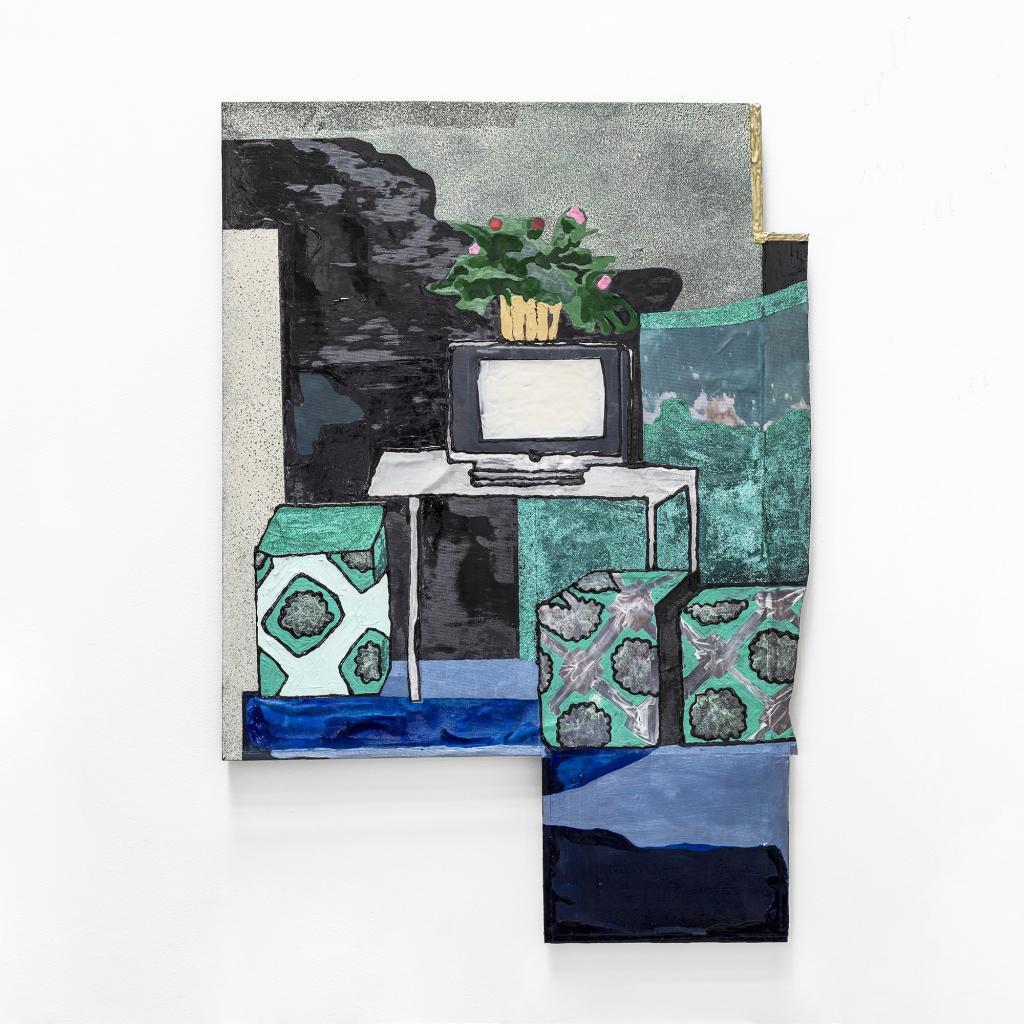
NM: For this exhibition, the question of “what is the show about?” remains unresolved. Given this state, what would you say the exhibition is pointing us to or asking us?
KdV: The question “what is the show about” remains unresolved simply because the show is many things. The show is one founded on questions and potential relations instead of answers and clear understanding. In its confoundedly unresolved nature, Bananas and Saints Alike is waiting in anticipation for the viewer to respond.
I am drawn to scenarios that don’t feign truth, but rather acknowledge the prevalent confusion of real life. This confusion is fueled by multitudes of meta-narratives driven by vastly different bodies and minds. Bananas and Saints Alike is a world open to the grey of the daily, the hybridity of understanding and the overwhelming nature of even the simplest moments when one wishes to understand.
NM: If a show defies political commentary, historical analysis, or self-examination then it seems the idea of storytelling becomes one of the ways in which the work can be interacted with. What stories are you personally interested in right now?
KdV: A year ago I read a book by Nigerian author, Teju Cole, called Known and Strange Things. It is a collection of essays which takes the reader into the non-linear, relational mind of this incredible author. Similar to Proust’s In Search of Lost Time, Cole peels back the readers’ eyelids, forcing one to acknowledge and experience the complexities of contemporary “truths”/ moments. These stories have had a massive impact on my work— not because of the subject matter, but rather because of the exploratory nature of the author’s voice. With this body of work, I was driven toward exposing mundane narratives (a washing line, a fruit basket, a low-budget shrine) as the complex things they have become over time and in the mouths of many.
NM: As an artist, what is your relationship with play?
KdV: In my practice playing can be immediately related to making. Making is simply thought made visible, and has proven itself to be my most successful means of finding out whether something would work. The possibilities that thrive in play cannot always reach their potential if the outcome has been programmed, but when thought is translated as rhizomatic progress through making, play reigns supreme.
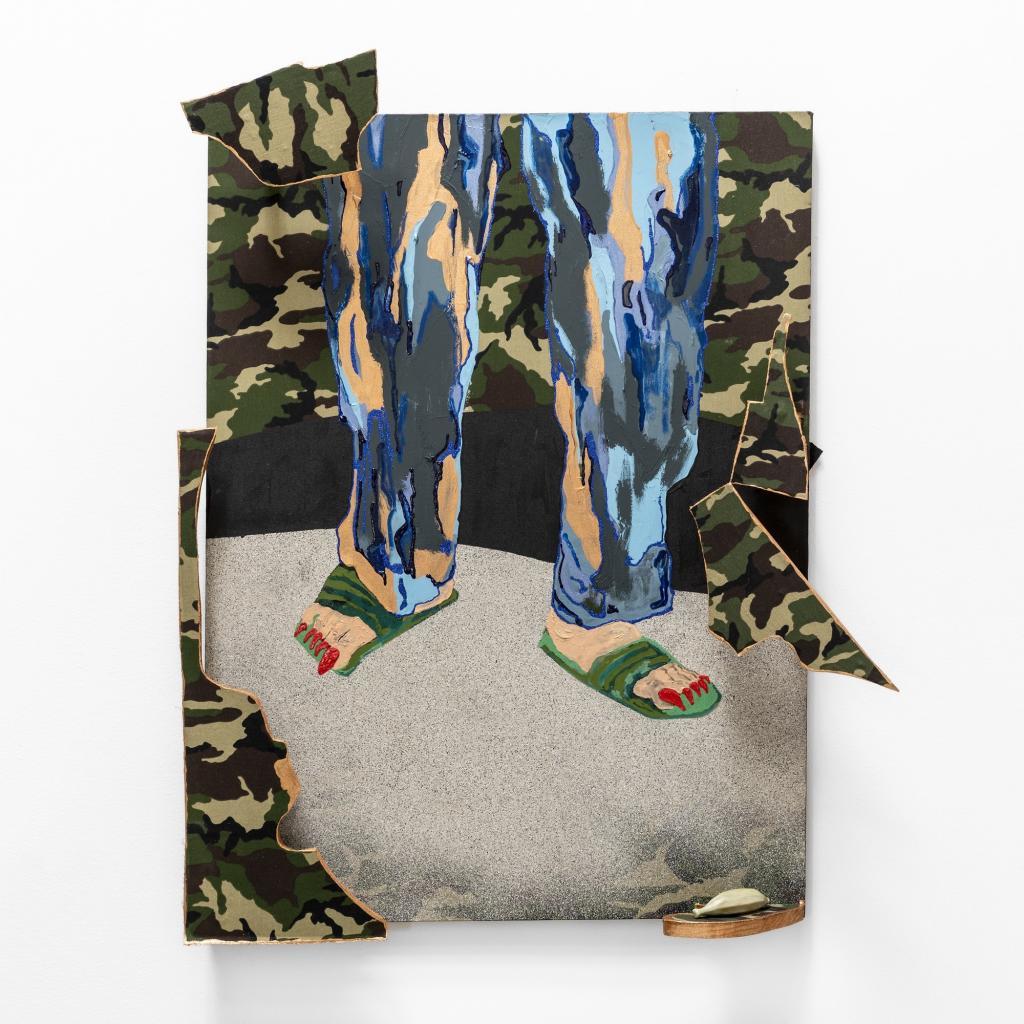
NM: One could argue that there is a “withholding” in this exhibition. “The act or art of withholding” conjures up ideas of mystery for me, do you feel that there is still enough mystery in the (art)world? Maybe the starting point should be why mystery?
KdV: Why not mystery? Mystery exists in all the most beautiful facets of our lives—love, spirituality, forgiveness, and ultimately, it is the core of this thing called life. For thousands of years individuals have been caught up in “the truth of life”—personally, I prefer the mysteries. Mystery exists sometimes despite the hard truths we find in our daily lives. It is the feeling before you fall asleep and the moment the sun sets behind the horizon. It is what you take home after watching an inspiring film or eating a mouthful of delicious food. There can never be a shortage of mystique; only our inability to acknowledge it. Reality often tries to replace mystery with understanding, but why open yourself up to such disappointment?
NM: I’m interested in the idea of mutation as method, why is this notion of mutation worthwhile? What does it do?
KdV: Mutation allows change. It is free-flowing energy designed to allow external forces to influence and alternate the path a piece was originally set on. Besides the physical presence of mutation (interaction between 2D and 3D, the morphing of the boundaries of canvas or super-imposed imagery contorting a clear understanding of the work) the most powerful changes take place once the works have left my studio and enter the public realm. There they are exposed to all kinds of projections from every engaging viewer. The ultimate mutation is the works bending and folding to fit versatile narratives. Being made as subjects in flux, it is only natural for the works to be opened up for further transformation.
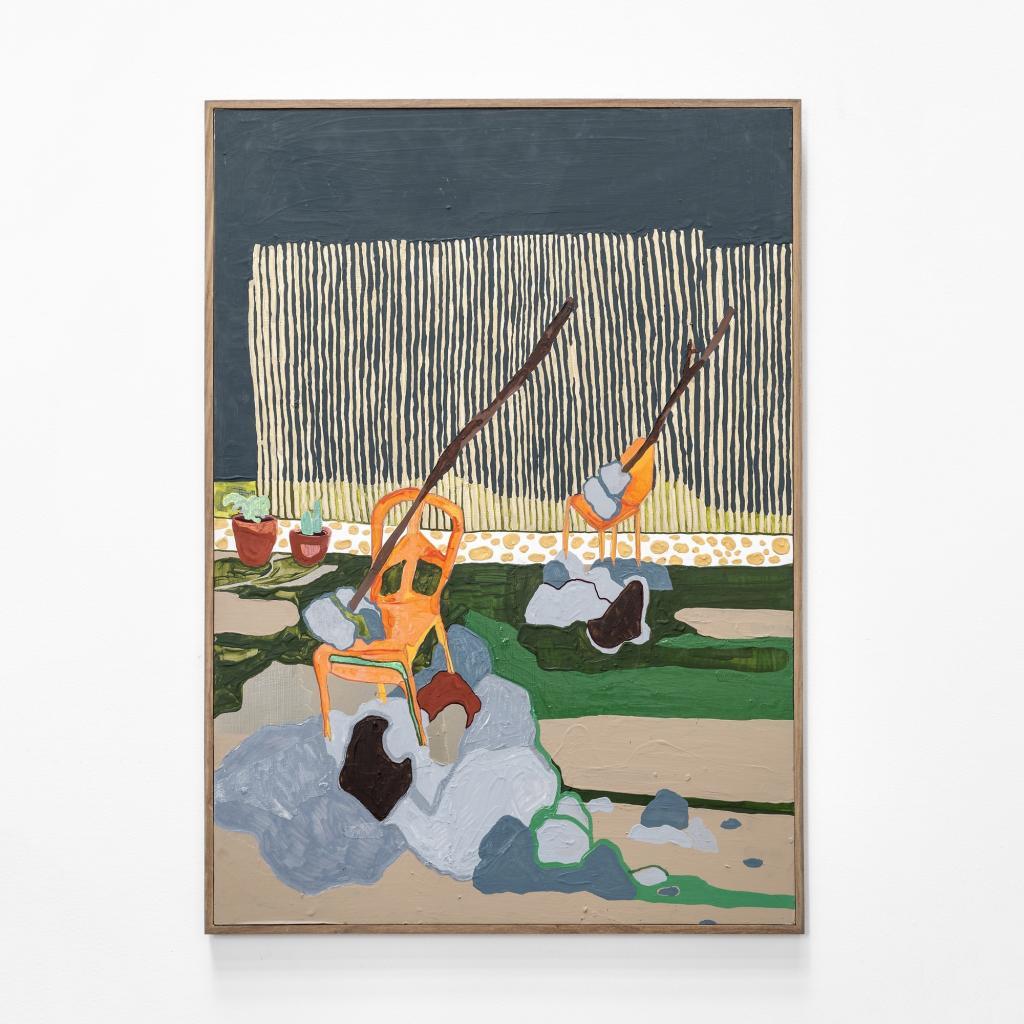
NM: Can you tell us about specific works in the show, that have completely mutated or transformed from what they were when you began making them (either in terms of the idea, the materials or the entire form)?
KdV: By far my greatest challenge was Bananas and Saints Alike. The title piece of the show started as a relatively small collage of snake-skin material, Mary with Baby-J and about four bananas. What started out as a manageable piece became the heavy-weight championship of my young career. It was also the first piece that broke the boundaries of the canvas (and my first real engagement with yellow- in no uncertain terms). The piece’s mutation set the tone for further works, forcing me to push each piece beyond the point of breaking into a realm where it can exist beyond its original context.
Katharien de Villiers was born in 1991 in Cape Town. She currently lives and works in Cape Town.
For more information about the exhibition or the artist, you can contact Jana Terblanche from SMITH Gallery Cape Town at jana@smithstudio.co.za.

